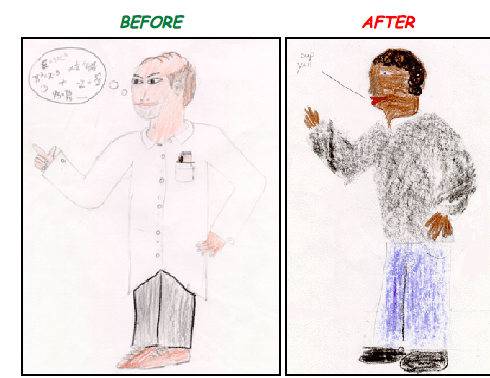Knowledge production is a collective endeavor. Individuals get named as authors of studies and on the covers of books and journal articles. But little knowledge is produced in such a vacuum that it can actually be attributed to only those whose names are associated with the final product. Bruce Holsinger, a literary scholar at the University of Virginia, came up with an interesting way of calling attention to some of women’s invisible labor in this process–typing their husbands’ manuscripts.
Holsinger noted a collection of notes written by husbands to their wives thanking them for typing the entirety of their manuscripts (dissertations, books, articles, etc.), but not actually explicitly naming them in the acknowledgement. It started with five tweets and a hashtag: #ThanksForTyping.
A peek at an archive of women’s academic labor: wives thanked for typing their husbands’ manuscripts. 1/5 #ThanksForTyping @TheMedievalDrK pic.twitter.com/yAf03lsweg
— Bruce Holsinger (@bruceholsinger) March 25, 2017
And here’s another one. #ThanksForTyping 2/5 pic.twitter.com/HsTTHQvBaL
— Bruce Holsinger (@bruceholsinger) March 25, 2017
Another wife thanked for typing her husband’s manuscript. #ThanksForTyping 3/5 pic.twitter.com/CsNQAR8Wik
— Bruce Holsinger (@bruceholsinger) March 25, 2017
And a fourth unnamed wife thanked for typing her husband’s manuscript. #ThanksForTyping pic.twitter.com/YmUmWzkTvO
— Bruce Holsinger (@bruceholsinger) March 25, 2017
And more anonymous women’s academic labor. #ThanksForTyping 5/5 pic.twitter.com/lvxLmyczKx
— Bruce Holsinger (@bruceholsinger) March 25, 2017
Typing a manuscript is a tremendous task – particularly when revisions require re-typing everything (typewriters, not computers). And, though they are thanked here, it’s a paltry bit of gratitude when you compare it with the task for which they are being acknowledged. They’re anonymous, their labor is invisible, but they are responsible for the transmitting men’s scholarship into words.
Needless to say, the hashtag prompted a search that uncovered some of the worst offenders. The acknowledgements all share a few things in common: they are directed at wives, do not name them (though often name and thank others alongside), and they are thanked for this enormous task (and sometimes a collection of others along with it). Here are a few of the worst offenders:
OH MY GOD THIS ONE! #ThanksForTyping pic.twitter.com/jMzDwAtteQ
— Bruce Holsinger (@bruceholsinger) March 25, 2017
The unnamed wife who typed the manuscript FIFTEEN FOOKIN TIMES, and the named editor. #ThanksForTyping pic.twitter.com/8GUwvBOBPz
— Bruce Holsinger (@bruceholsinger) March 25, 2017
This could not have been written without my wife’s anonymity. #ThanksForTyping pic.twitter.com/6yzfwDBPEw
— Bruce Holsinger (@bruceholsinger) March 25, 2017
!!! “On the frontiers of scholarship, the work of the pioneer wife continues, abating neither in hardship nor dignity.” #ThanksForTyping pic.twitter.com/5Z1KufNuTP
— Bruce Holsinger (@bruceholsinger) March 25, 2017
This one is AMAZING. “My wife” did his paleography for him: transcribed, edited, and corrected from 16th-c. editions. #ThanksForTyping pic.twitter.com/w0Lk0knfDa
— Bruce Holsinger (@bruceholsinger) March 26, 2017
Oh my god maybe for the win. #ThanksForTyping pic.twitter.com/iSUPn6oR1b
— Bruce Holsinger (@bruceholsinger) March 25, 2017
Indeed, typing was one of those tasks for which women were granted access to and in which women were offered formal training. Though, some of these are notes of gratitude to wives who have received education far beyond typing. And many of the acknowledgements above hint that more than mere transcription was often offered – these unnamed women were also offering ideas, playing critical roles in one of the most challenging elements of scientific inquiry and discovery – presenting just what has been discovered and why it matters.
One user on twitter suggested examining it in Google’s ngram tool to see how often “thanks to my wife who,” “thanks to my wife for” and the equivalents adding “husband” have appeared in books. The use of each phrase doesn’t mean the women were not named, but it follows what appears to be a standard practice in many of the examples above – the norm of thanking your wife for typing your work, but not naming her in the process.
Of course, these are only examples of anonymous women contributing to knowledge production through typing. Women’s contributions toward all manner of social, cultural, political, and economic life have been systemically erased, under-credited, or made anonymous. Each year Mother Jones shares a list of things invented by women for which men received credit (here’s last year’s list).
Knowledge requires work to be produced. Books don’t fall out of people’s heads ready-formed. And the organization of new ideas into written form is treated as a perfunctory task in many of the acknowledgements above–menial labor that people with “more important” things to do ought to avoid if they can. The anonymous notes of gratitude perform a kind of “work” for these authors beyond expressing thanks for an arduous task–these notes also help frame that work as less important than it often is.
Tristan Bridges, PhD is a professor at the University of California, Santa Barbara. He is the co-editor of Exploring Masculinities: Identity, Inequality, Inequality, and Change with C.J. Pascoe and studies gender and sexual identity and inequality. You can follow him on Twitter here. Tristan also blogs regularly at Inequality by (Interior) Design.

 Originally posted at
Originally posted at 




